Overlanding adventures are fueled by fuel, of course, which means gasoline, diesel, and, more recently, electricity. Loading up for a long trip off the beaten path usually means adding some fuel storage to the mix, and combustibles like gasoline need to be handled with great care. Here’s a short primer on how to transport extra fuel and the best containers that will keep you safe.
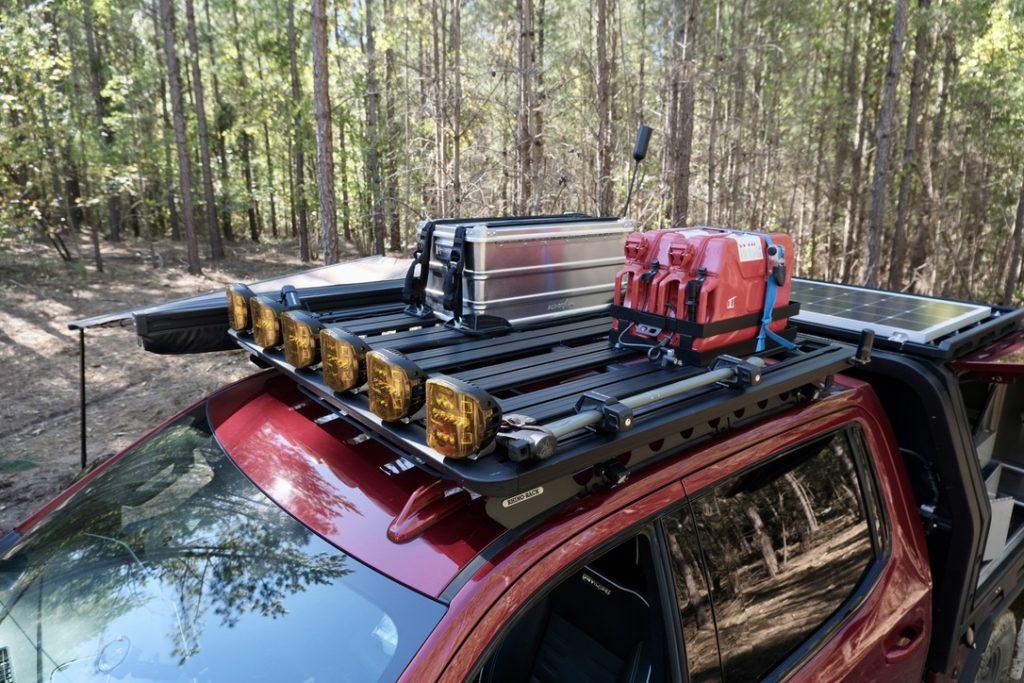
Gas Can Safety 101
Since transporting fuel involves the risk of fire and explosion, both OSHA and the DOT have had their say in the U.S. on what makes a safe gas can or “jerry can,” as they are also known. In general terms, they must be made of “metal or polyethylene (aka plastic) construction,” and “they must have flame arresters, self-closing lids, pressure relief, and 100% leak testing features.”
While gas cans come in various shapes, sizes, and capacities, in general, they are one of two approved types: Type I containers, which most of us recognize and have at home, have one opening for both filling the can and dispensing the fuel. Type II containers, which are a bit fancier, have both a fill and dispense opening.
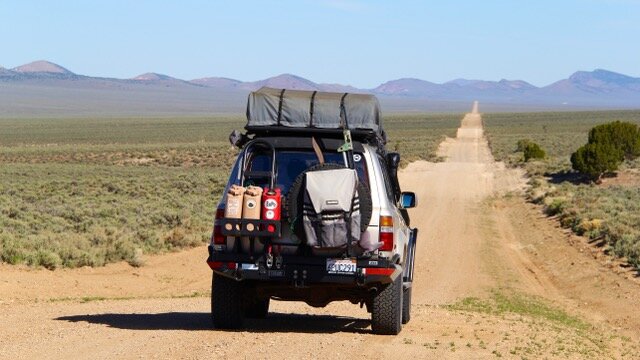
Type II gas cans can typically dispense fuel more quickly, and so are better for larger fuel loads, but Type I cans are the most common by far. Also, the maximum capacity for both is five gallons for an approved fuel container. Yes, you can get larger capacities for commercial applications, but typically, you’ll fill containers with five gallons or less.
In general, if you buy a gas or jerry can at any U.S. auto parts retailer, gas station, or from a U.S.-based online retailer, it will likely meet those safety specifications. If you buy a super-cheap fuel carrier from some sketchy website and it takes six weeks to arrive, you may be taking some unneeded risks regarding quality, durability and a leaking fire hazard. Be sure to research your purchase carefully.
What About Motorcycles?
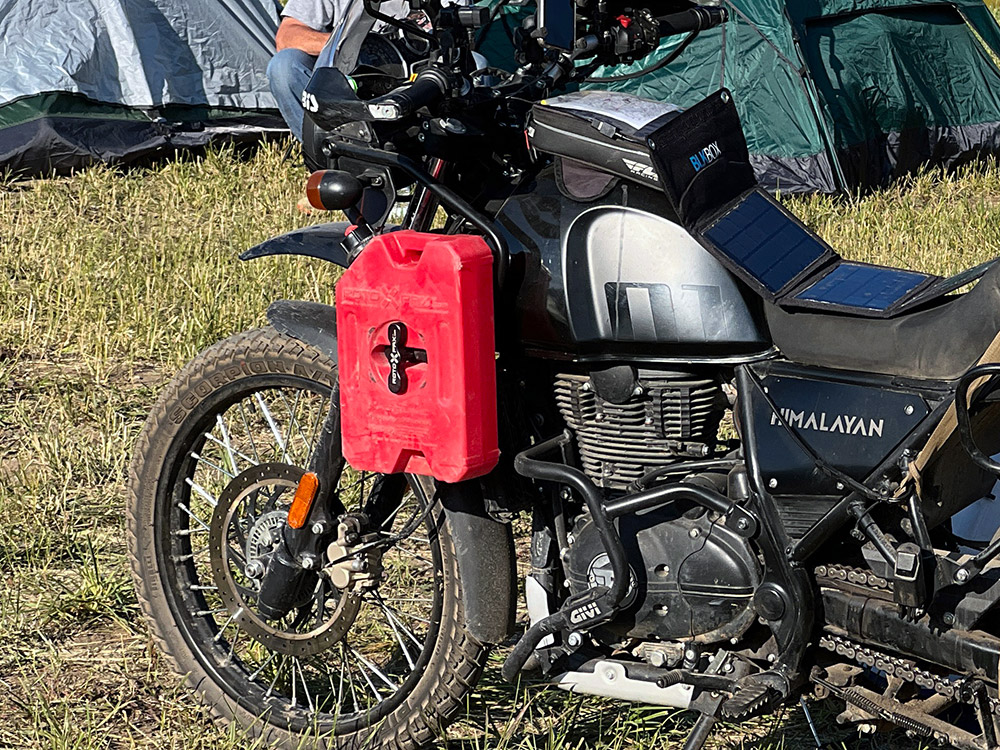
Overlanding via motorbike puts special pressure on the fuel supply since motorcycles typically can’t carry nearly as much fuel. Outside of getting a bigger main tank, there are basically three options. The first is a mountable RotopaX-type fuel cell that attaches to the bike itself, typically on a rear rack, but I’ve also seen them mounted to the front crash bars (as above). Obviously, a hard crash may result in a spill, so riders will have to determine how much risk they want to take with their fuel supply when locating it on the bike.
Another popular option for riders is a “fuel bottle.” These smaller metal bottles completely seal the fuel in, so there’s little chance of spilling, and they can be tucked into saddlebags or, more often, strapped to the back of a saddlebag, allowing riders to carry multiple bottles. Typically, a fuel bottle holds 750 milliliters (25 ounces), which is the same capacity as a typical bottle of wine. However, you can get bottles up to 30 ounces/850ml. Those capacities might not sound like much, but when the main tank runs dry, the 20 miles further it can get a bike might be enough to get you back to a road or that small town with a pump. That’s why many riders often carry several fuel bottles if possible.
A less common option in the U.S., at least, is a fuel “bladder,” or what is essentially a specially designed soft “bag” for gasoline similar to a hydration bag. More popular in Australia and Europe, fuel bladders might seem a bit iffy in terms of safety, but they offer larger capacities (up to 20 liters/4.4 gallons). When mounted correctly, typically on the bike’s tail section or atop a hard pannier so they are protected in case of a tip-over, they are highly reliable in terms of safety. Still, it is a “bag” of fuel, so use extreme care when using fuel bladders.
All that said, here are our favorite choices for adding range to your adventure, whether it’s on four (or more) wheels or just two.
Wavian – 20 Liter Metal ‘Jerry Can’
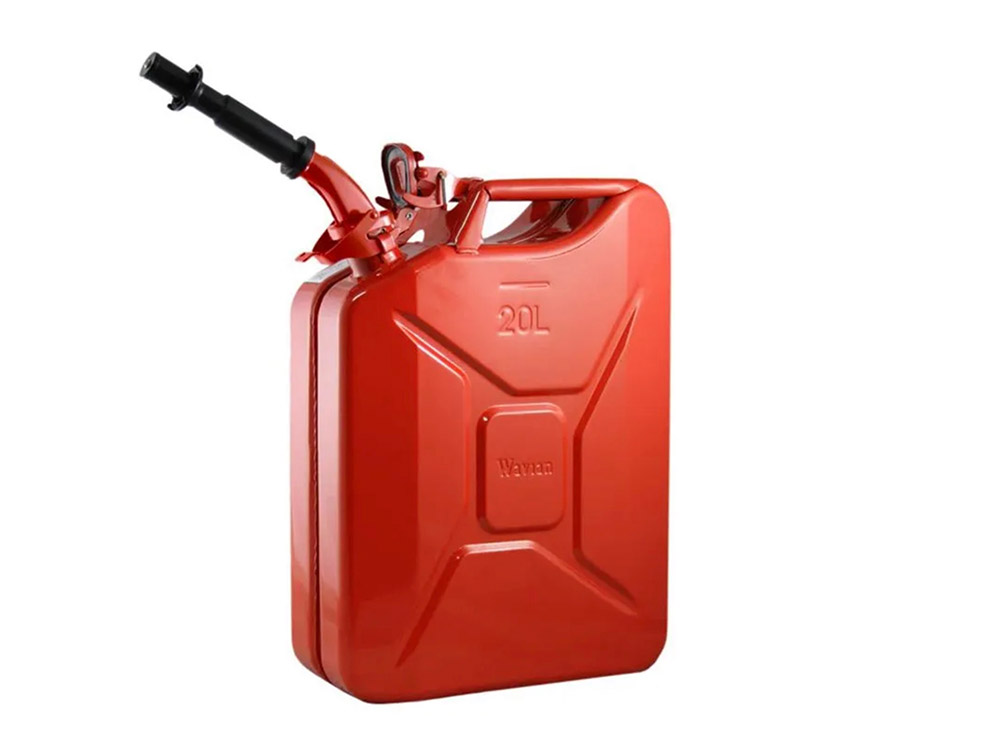
The Wavian 20-liter (4.4 gallons) metal Jerry Can features an internal breather, a locking splash-proof pouring spout, and an interior coated with Rezol to prevent rusting. Metal construction adds toughness, and the company makes a wide range of carriers, mounts, racks, protective gear, and more to keep things safe. It is also available in black for water and diesel or for storing non-fuel liquids. It’s also DOT, EPA, and CARB-approved and built to military standards. Take care of it, and it should last almost forever.
MSRP: $89.99
RotopaX Fuel Containers
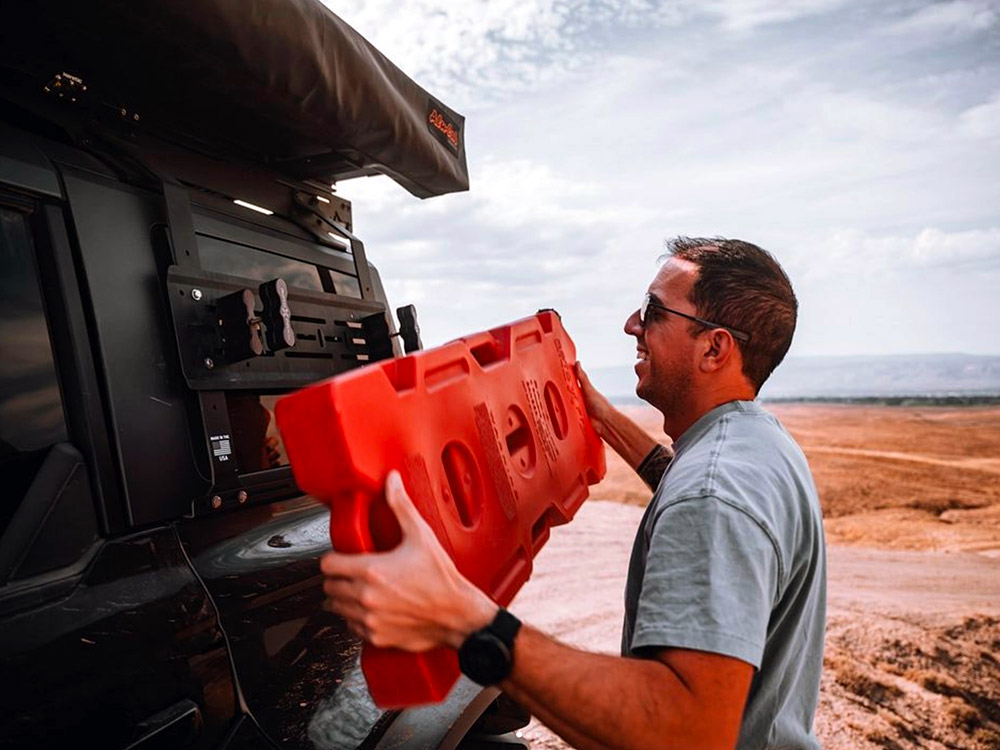
Available in sizes from one to four gallons (above), Rotopax makes fuel containers for rigs ranging from Earth Roamers to a Honda Trail 125. RotopaX Gasoline Packs are made in the USA from high-strength plastic and are individually tested. They can be mounted to most any flat surface, cargo rack, spare tire, or moto crash bars using RotoPAX’s proprietary mounts (sold separately) or with a manufacturer’s bumper or gas can mounting hardware. The LEGO-like locking shapes of the containers means they can also be securely stacked when mounted for expanding capacity. Rotopax offers yellow, orange, black, tan, green and white containers as well for storing different types of liquids.
MSRP: Starting at $79.95
READ MORE: Review: Midland GXT67 Pro GMRS Radio
Desert Fox 6-liter Fuel Bladder Bag
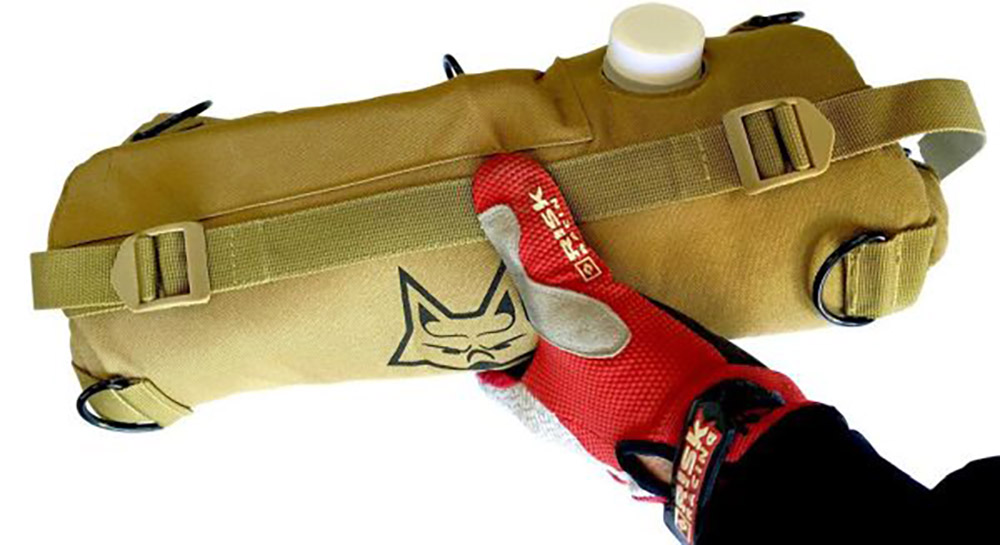
Desert Fox makes fuel bladders for motorcycle riders in sizes from three or six liters and even 20 liters – or over 4 gallons! But we think the six-liter model strikes the right balance between size, capacity and cost. The bladders feature numerous tied-down rings, multiple handles for easy pouring, a built-in expanding spout that rides in a storage pocket, and a tough canvas exterior. Desert Fox says the bladders are military-grade, and we have yet to see one leak a drop. They can also carry water or other liquids, but once you put gas in one, you might want to earmark that bladder just for gas to be safe. Obviously, they will also work for overlanding rigs and the soft containers can more easily fit in tight spots where a typical jerry can or gas can won’t go.
MSRP: $89.24
MSR Fuel Bottles
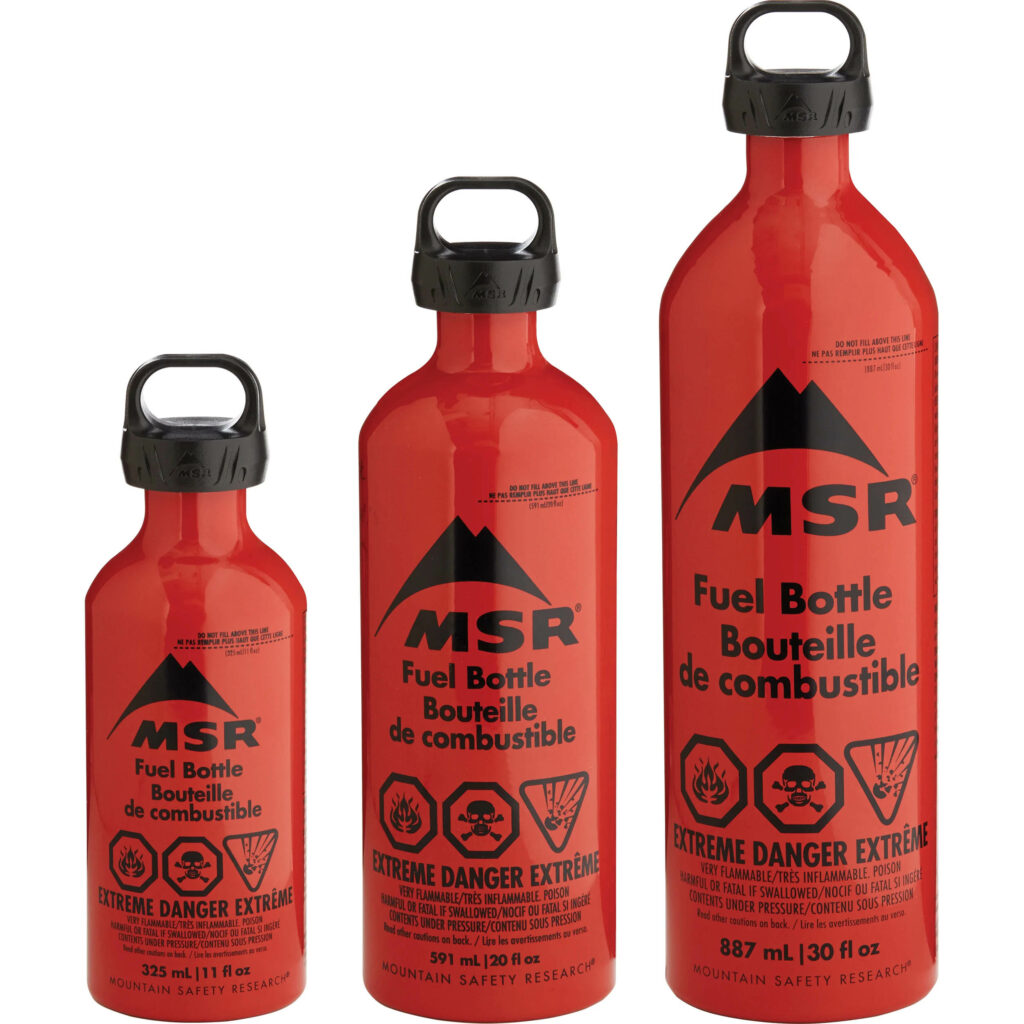
MSR fuel bottles are a favorite of adventure motorcycle riders and overlanders. All-steel construction can withstand most impacts, and the cap seals completely, keeping gas and vapors in the bottle in rough conditions. Available in sizes from 11 to 30 ounces (850ml). Thirty ounces of gas may not seem like much, it could mean another 20 or 30 miles worth of riding to continue your journey or find help. Many riders carry more than one. They also fit standard stove fuel supply connections for use as a cooking fuel supply.
MSRP: Starting at $26.95
Front Runner Double Jerry Can Holder
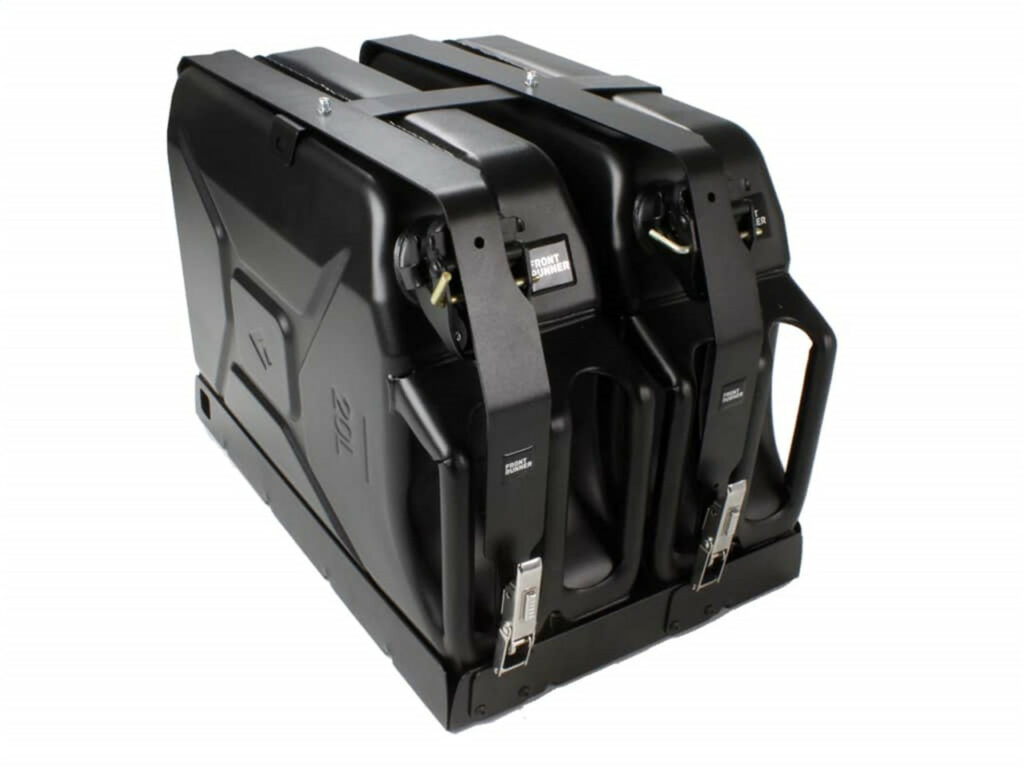
Need to bring a fair bit of fuel on your trip? There are a variety of mounting options for Jerry Cans, but regardless of what you go with, be sure that it’s secure. A fuel spill is very dangerous, so relying on bungee cords or other improvise options for securing Jerry Cans is a very bad idea. Instead, go with a trusted solution like this hard mount from Front Runner. It can carry two full-sized Jerry Cans, and it’s lockable, so your fuel is secured.
Jackery SolarSaga 500 X Foldable Solar Panels
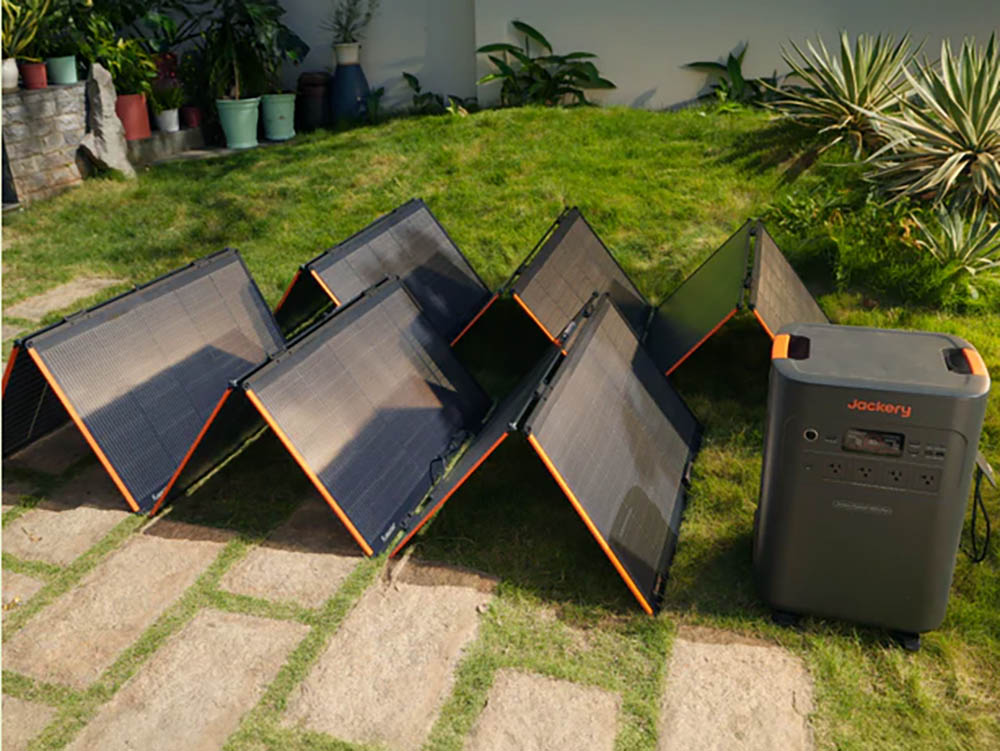
More and more, much of our overlanding gear runs on electric fuel, including some of the new pickup trucks. If you want to leave the generator at home, the SolarSage 500 X solar array from Jackery can zap your tech to full – or, given enough time, add some miles of range to that overlanding EV. Use all the panels for the 500-watt output on a sunny day, or use one or two to charge a laptop or smaller tech. For vehicle charging, you’ll also need a Jackery portable power bank (right, but not included) with a 120-Volt outlet, but if you’re going to be on-site for several days, it can add a fair bit of charge to an electric vehicle – and also run that blender or movie projector.
MSRP: $999